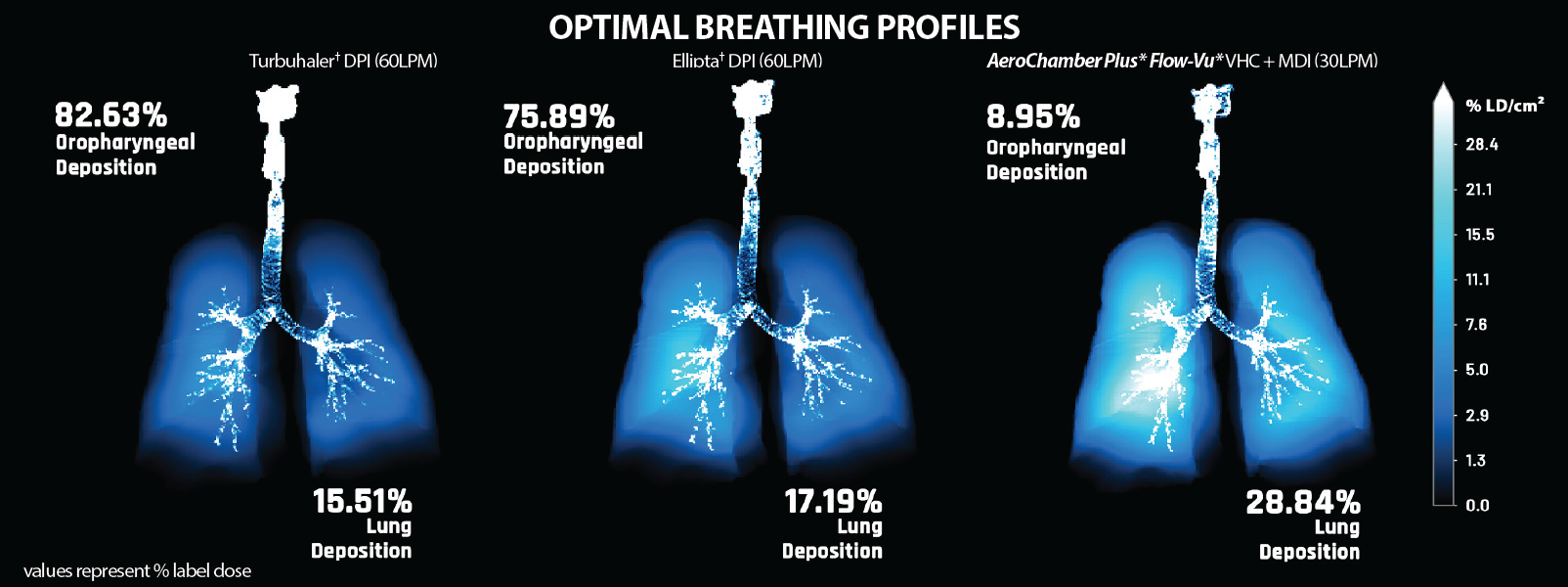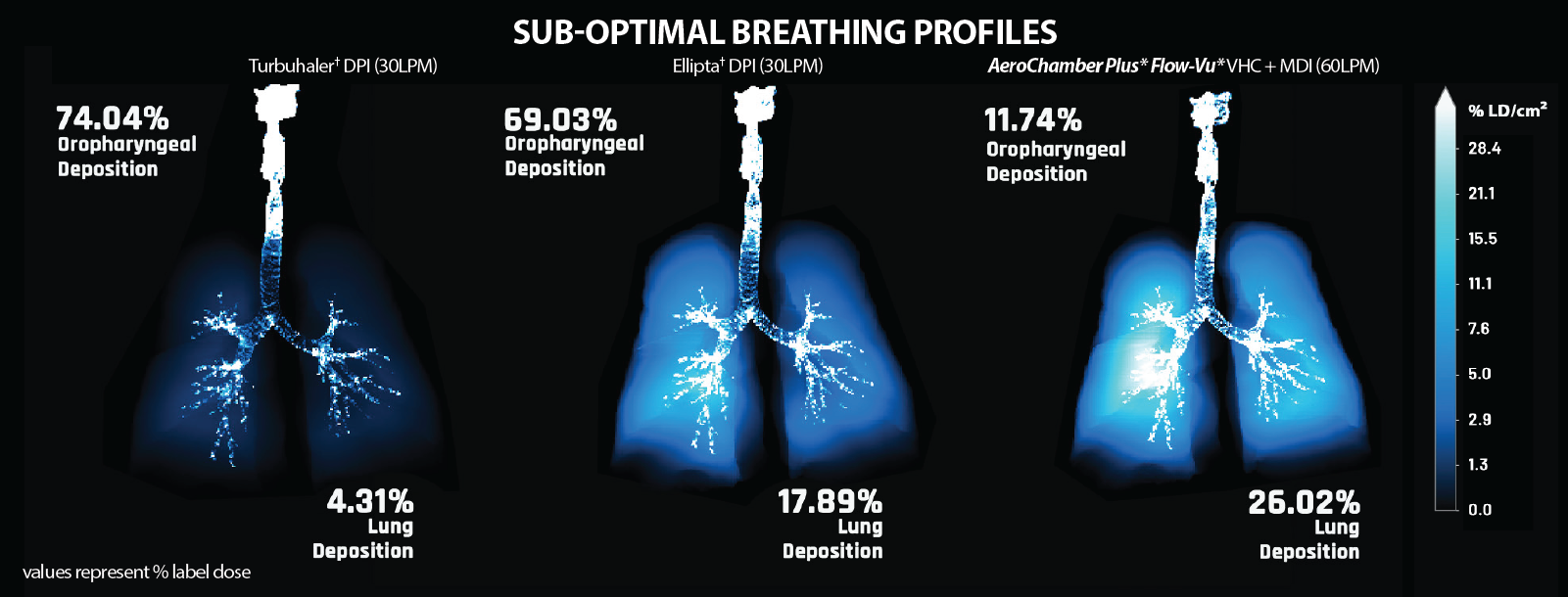RESULTS
Expressed as a percentage of labelled metered doses (average values used when more than one drug in combination)
 |
 |
Based on your language, we suggest to change your settings to: En fonction de votre langue, nous vous suggérons de modifier vos paramètres comme suit :
Yes, that's correct Oui, c'est correct.Both pMDI/VHC and DPI routes are prescribed to deliver inhaled aerosol-based medications to the lungs for the treatment of COPD. A slow and long inhalation often accompanied by a breath-hold is preferred when using a pMDI/VHC, whereas a forceful inhalation of short duration is advocated for passive DPI use.
Objective
Use Functional Respiratory Imaging acquired from a model adult patient with COPD to compare predicted airway deposition between pMDI with AeroChamber Plus* Flow-Vu* Valved Holding Chamber and two Dry Powder Inhalers at optimal and sub-optimal inhalation profiles.
Patient
The model adult patient was based on the CT scan of a male subject aged 67 years having height of 170 cm, with moderate COPD (GOLD stage III2) accompanied by moderate emphysema (emphysema score = 0.9% lung volume)
Inhalers
Modelled optimal and sub-optimal inhalation conditions were assessed as part of the FRI technology for each inhaler class based on breathing profile data in an ERS/ATS task force consensus statement1 in accordance with the parameters specified in TABLE 1.
It is important to note that peak inspiratory flows for the DPIs were higher (approx. 90 and 45 L/ min for optimal and sub-optimal) than the reported mean flow rates.

Table 1: Modelled Optimal and Sub-Optimal Inhalation Conditions
Note: APSD values for Trelegy† Ellipta† sub-optimal were gerated at 40L/min
Expressed as a percentage of labelled metered doses (average values used when more than one drug in combination)
 |
 |
Predictions from FRI, mimicking inhalation by an adult patient with moderate-tosevere lung function impairment defined by GOLD stage III COPD provide support for the claim that efficiency of inhaled medication delivery to the lungs by pMDI with the tested VHC when inhaling either optimally or sub-optimally is likely to be greater than that for the two widely prescribed passive DPIs evaluated.
Regional lung deposition based on C/P ratio is predicted to be only slightly influenced by deviations in inhalation flow rate from optimal to sub-optimal within the flow rate ranges studied, with the greatest peripheral deposition observed for the pMDI/VHC system at optimal inhalation flow
1 Laube BL, Janssens HM, de Jongh FHC, Devadason SG, Dhand R, Diot P, Everard ML, Horvath IL, Navalesi P, Voshaar T, Chrystyn H. ERS/ISAM task force consensus statement: What the pulmonary specialist should know about the new inhalation therapies. ERJ Express 2011, 37(6): 1308-1331. MD-231A-1122.
Using Functional Respiratory Imaging (FRI) to Compare Predicted Airway Deposition Between Pressurized Metered Dose Inhaler (pMDI) with AeroChamber Plus* Flow-Vu* Valved Holding Chamber (VHC) and Two Dry Powder Inhalers (DPIs) in a COPD patient.